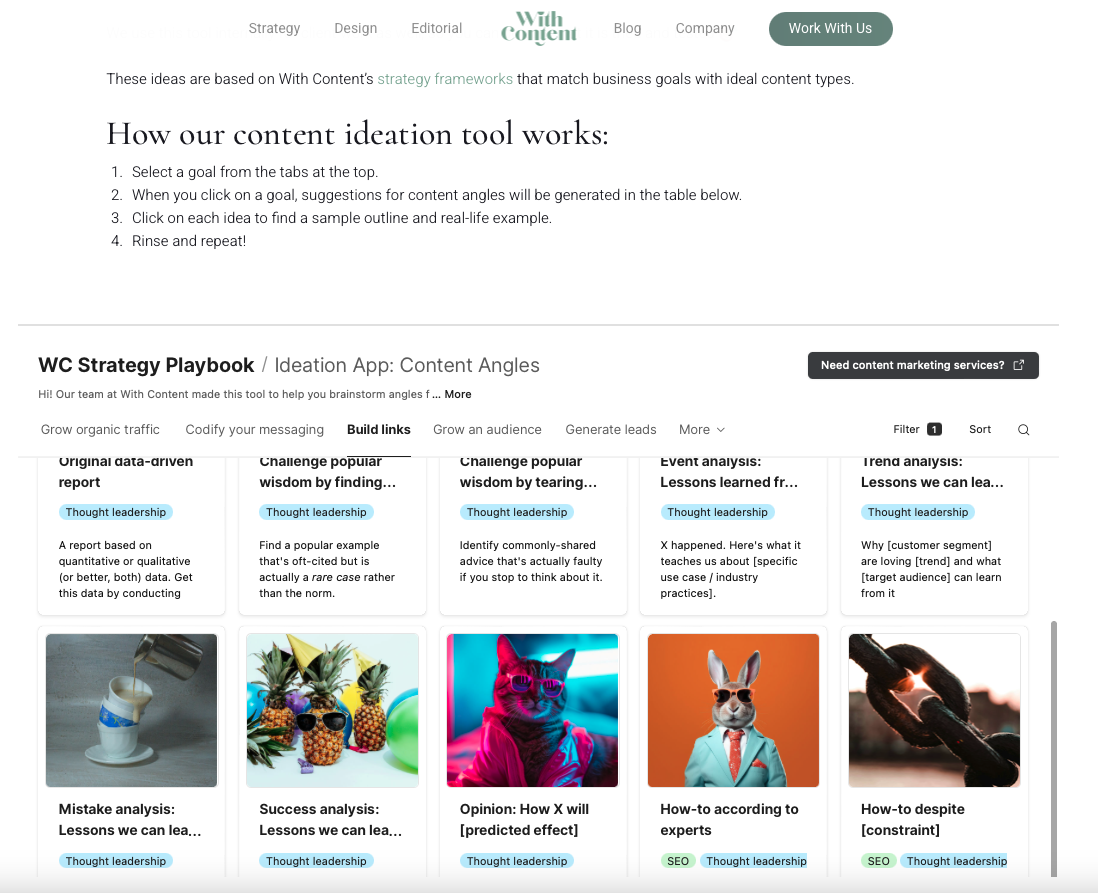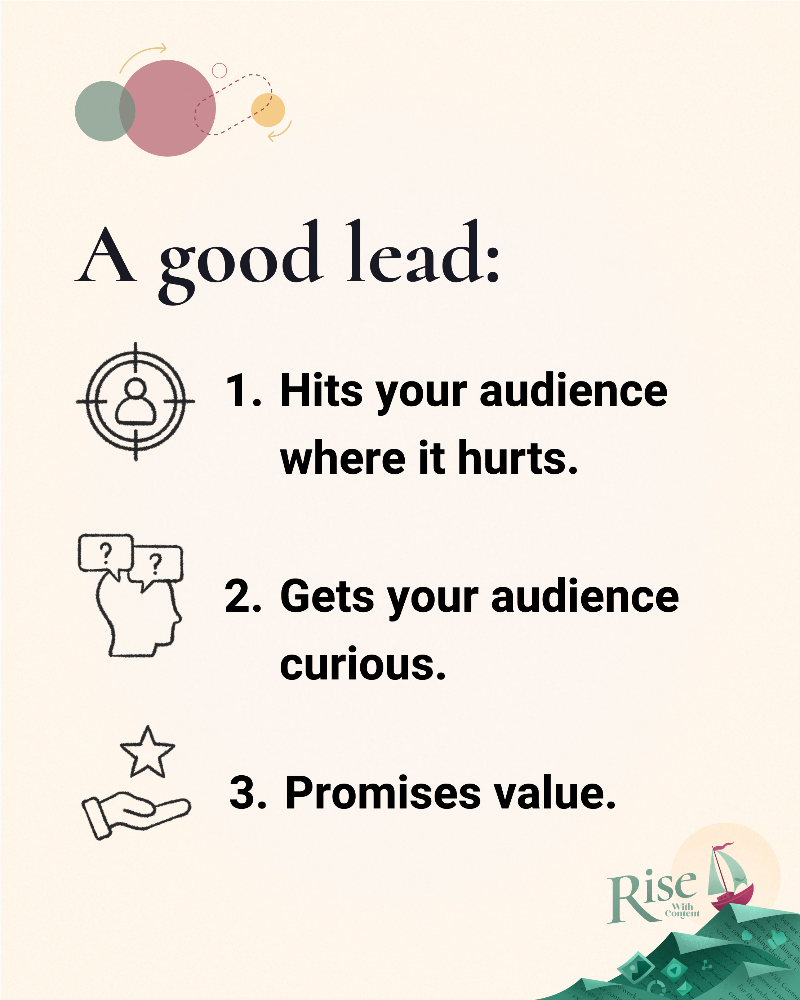
Hi! Jolene here, a Senior Content Strategist at With Content.
Last week, to celebrate Rise’s 3rd month, we sent a survey to our readers. Those who shared their answers got one-week access to With Content’s in-house ideation app.

Our app matches specific goals with suitable content types and angles. It shares sample outlines for each angle, too.
Today we’ll share techniques for cementing those content angles with a strong lead.
Why a good intro has strategic value in content marketing
Hook, lede, lead. Whatever you like to call it, a good opening line should work hard for you. It hooks the attention of your busy audience, leads them to your brand, and persuades them that what you’re about to say has value.
In content marketing, the power of the lead sometimes falls by the wayside. Some marketers see it as filler — the customary fluff you need before launching into the solution you’re selling. This is especially true in highly pragmatic cultures like Singapore, where efficiency is a watchword.
“Let’s get straight to the point,” they say. “Can we condense the intro into two sentences?”
And we get it. When the average attention span today can be measured in seconds, it’s natural to rush into your pitch before your reader starts clicking away.
But we believe doing the opposite is more effective. The shorter attention spans get, the more important the lead becomes. Persuasion takes time, and the most efficient introductions are seldom convincing enough to get your audience to stick around — no matter how great your CTA is.
Either you craft a hook that connects with customers and gets them to stay — or you become just another piece of content to skim and swipe away.
3 techniques for nailing the lead
Let’s look at what a strong lead can do to your audience:

1. It hits them where it hurts.
“When you advertise fire extinguishers, open with the fire.” — David Ogilvy
Many good hooks begin with pain — a pain point of your customers, that is.
It’s not just about pointing at a problem they already know about (that’s why they’re Googling for a solution, after all). It’s about showing you deeply understand their struggles and taking the time to relate.
Here’s how we kicked off an article for a client providing career resources to fresh graduates:
Of course, not all your customers are facing pain on the same level as a fresh grad lost in the corporate jungle. But whether it’s mild stress from a technical issue or full-on frustration about a business challenge, everyone wants to feel understood.
Speak to the heart of their pain, and you’ll build an emotional connection from sentence one.
2. It gets them curious.
When your customers are experts in their field, what’s one foolproof way to get their attention? Tell them something they don’t already know.
A solid lead always manages to create curiosity in your readers. Not only does it get them to stay on your page, it gives your brand reputation a bit of a boost. You’re proving you think in innovative ways, and innovation is the hallmark of Southeast Asia’s most successful brands.
We like to do this in a few ways. You can start with a surprising statistic, ask a question, flag a new trend, or share an anecdote. If it makes sense, try going against the grain of industry wisdom.
Here’s one we wrote for a client who provides shipping and returns management services:
We often think that returns happen when products don’t fit, are damaged, or don’t match customers’ expectations. But in fact, more than one in three shoppers globally say they deliberately over-order items online — with the intent of returning them.”
3. It promises value to them.
At the end of the day, we know that readers aren’t there for pure entertainment (not in content marketing, at least).
A strong lead will hint at why your audience should care about what you have to say. Why is this content important to them, and how is it going to deliver information they need?
It could be something as simple as:
This opener tells readers they’re about to get insights into creating a payment experience that will drive e-commerce sales, giving them a reason to keep reading.
D.I.Y.: Sweat the lead — it’s worth it
There’s no shortcut to hammering out a strong, effective lead (that’s why journalists talk about ‘sweating the lead’). But whenever we get stuck, we like to go back to these three fundamentals:
- Understand your audience. Before hooking your audience, you need to know what bait to use. Delve into what your customers love, what inspires them, and what turns them off.
- Solve a problem. Most of the time, your audience is looking for solutions or ideas. Entice the reader by promising new insights, but don’t give it all away at the start.
- Spark an emotion. Facts alone don’t win hearts. Whether you’re inspiring fear about future challenges or piquing surprise with a bold claim, emotion is what captures your reader and leaves a lasting impact.
Let’s raise the bar of content marketing in Southeast Asia
We hope you enjoy Rise and find this newsletter helpful.
And if you do, why not share it with a friend?
Thanks for reading!
![]()
Jolene with help from Kat and Nikki



